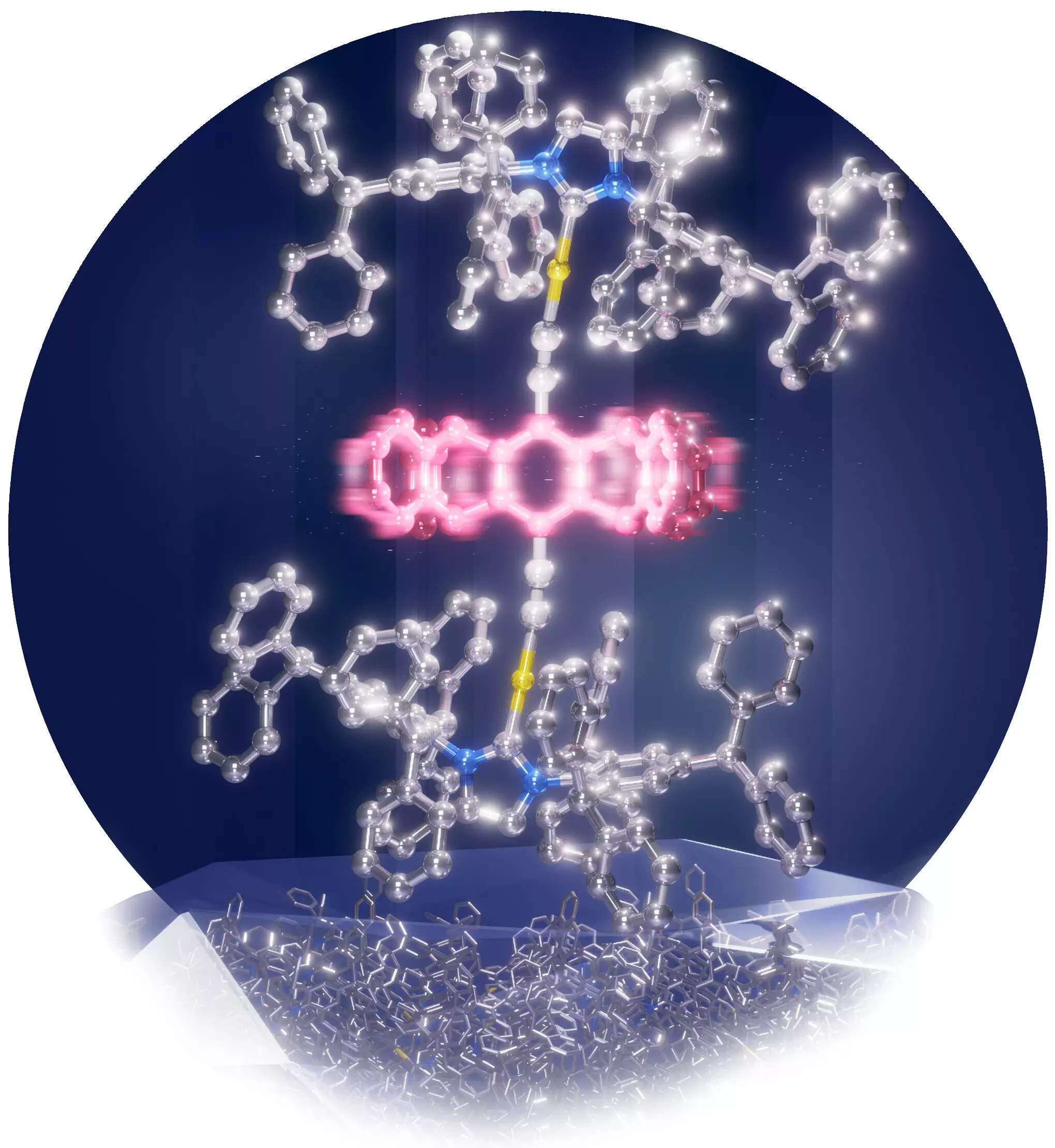Solid materials have long been regarded as rigid and motionless, but scientists are challenging this notion by embarking on a quest to incorporate moving parts into solids. This innovative approach opens up possibilities for creating unique and exotic materials, such as amphidynamic crystals. These crystals are remarkable as they combine both rigid and mobile components, allowing for the manipulation of molecular rotation within the material. However, achieving dynamic motion in crystals and solids, in general, poses a significant challenge due to their densely packed structures. This limitation restricts dynamic motion to molecules of a specific size. Yet, a groundbreaking study led by Associate Professor Mingoo Jin from the Institute for Chemical Reaction Design and Discovery (WPI-ICReDD) at Hokkaido University has shattered this size barrier, presenting the largest molecular rotor capable of operating in the solid-state.
Professor Jin’s team achieved a significant advancement by successfully demonstrating a molecular rotor in the crystal lattice composed of the molecule pentiptycene. This molecular rotor boasts an astonishing diameter that is approximately 40% larger than its predecessors in the solid-state. The key to enabling the rotation of such a massive molecule lies in creating ample space within the solid. To accomplish this feat, the researchers synthesized concave, umbrella-like metal complexes that acted as shields, protecting the rotor molecule from unwanted interactions with other molecules in the crystal lattice. By attaching an exceptionally large and bulky molecule to the metal atom of the stator, they were able to generate sufficient space to accommodate the giant rotor. Professor Jin drew inspiration from the design of an egg, which creates a large protected space within a circular hardcover. This concept was adapted to molecules by encapsulating the rotator space using bulky concave-shaped stators.
Experimental and simulated nuclear magnetic resonance spectra provided compelling evidence that the giant molecular rotor rotates in 90-degree intervals, with a frequency ranging from 100 to 400 kHz. This breakthrough expands the realm of possibilities for molecular motion in the solid-state and serves as a blueprint for exploring new directions in the development of amphidynamic crystals. Furthermore, it opens up exciting prospects for the creation of novel functional materials with unprecedented properties. According to Professor Jin, “The pentiptycene rotators utilized in this work have several pocket sites,” signaling their potential for further advancements and applications.
The successful fabrication of a molecular rotor of this magnitude undoubtedly pushes the boundaries of solid-state chemistry. The ability to develop crystals featuring operational molecular rotors creates a rich landscape for scientific exploration and innovation. By manipulating the rotation of these molecular components, researchers can now envision materials with highly customizable properties. This breakthrough paves the way for the development of amphidynamic crystals with tunable functionalities, such as unique optical, electrical, or mechanical characteristics. Furthermore, the potential applications extend beyond traditional chemistry and materials science, with implications for fields such as energy storage, catalysis, and sensors.
The recent achievement by Professor Mingoo Jin and his team in creating a functional molecular rotor within a solid-state crystal represents a remarkable breakthrough in the field of solid-state chemistry. By defying the conventional notion of rigid solids, this research opens up new horizons for the design and synthesis of materials with unprecedented properties. This groundbreaking advancement in molecular motion has set a size record for molecular rotors, showcasing the capability of constructing crystals with operational dynamic components. The blueprint provided by this study will undoubtedly catalyze further exploration and innovation in the realm of amphidynamic crystals and functional solid-state materials. With this new knowledge and understanding, scientists can push the boundaries of what is possible with solid materials, ushering in an era of exciting possibilities in various scientific and technological fields.


Leave a Reply